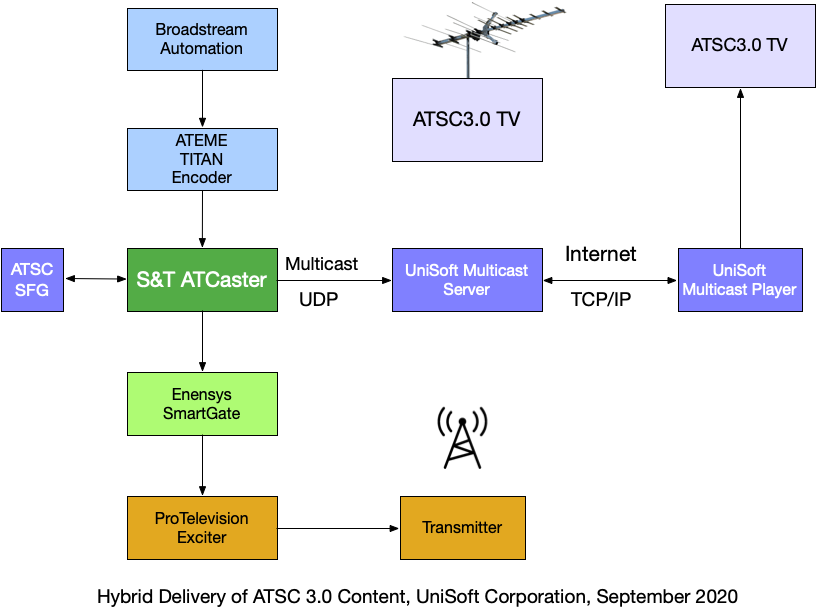
UniSoft Multicast Server
The UMS provides a simple mechanism for transmitting ATSC 3.0 services through a broadband connection to a 3.0 receiver.
UMS reads the multicast outputs of the broadcast signaling/ROUTE server, ATCaster for example, and sends over a TCP/IP connection to the UniSoft Multicast Player (UMP).

Hybrid ATSC 3.0 Transmission
Prior to ALP encapsulation and modulation to RF, 3.0 services exist as a number of UDP multicast transmissions. Each ATSC 3.0 service uses either ROUTE (Real-time Object delivery over Unidirectional Transport) or MMTP (MPEG Media Transport Protocol) broadcast as UDP multicast. The lower level signaling (LLS) is also sent via multicast.
UDP multicast cannot be sent directly over the internet, ISPs and cable companies prevent it. UMS receives a pre-configured set of multicast transmissions and makes them available over a TCP/IP connection.
The UniSoft Multicast Player, running on a Linux PC, re-generates each multicast broadcast. Those ATSC 3.0 implementations (including Sony and Alticast) that can tune directly to IP will be able to display the received ATSC 3.0 channels.
Either the UMS or the UMP can initiate the TCP/IP connection. This accomodates the scenario where the UMS cannot be placed on a publically facing server. Click here to see a typical configuration.